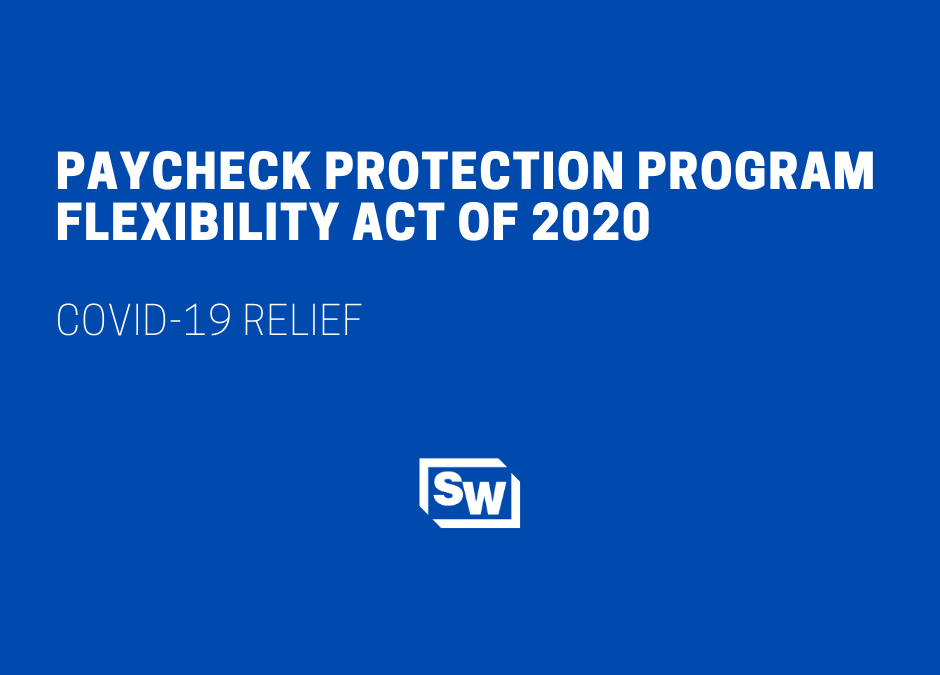- Extends the minimum maturity to five years from two years. for borrowers who obtain a loan on or after June 5, 2020. For loans made before June 5, 2020 could also extend the loan to 5 years if the borrower and lenders mutually agree to extend the maturity.
- The covered period will be the earlier of 24 weeks from the loan origination date or December 31, 2020.
- A borrower may elect to keep the 8-week covered period if the loan was disbursed prior to the law being enacted on June 5, 2020.
- The law moved the safe harbor date for rehiring employees and/or restoring employee’s pay to pre-pandemic rates from June 30 to December 31, 2020 for the loan forgiveness calculation.
- There is a new exemption to the FTE reduction for loan forgiveness if an eligible recipient, in good faith, is able to document one of two things.
- The inability to rehire individuals who were employees on February 15, 2020 and document the inability to hire similarly qualified employees for unfilled positions on or before December 31, 2020.
- Able to document an inability to return to the same level of business activity as such business was operating at before February 15, 2020, due to compliance with requirements established or guidance issued by the Secretary of Health and Human Services, the Director of the Centers for Disease Control and Prevention, or the Occupational Safety and Health Administration during the period beginning March 1, 2020 and ending December 31, 2020, related to the maintenance of standards for sanitation, social distancing, or any other worker or customer safety requirement related to COVID-19.
- An example would be due to compliance with CDC health precautions a restaurant may not be able to return to normal employee levels due to fewer tables being available to serve. With the requirements of social distancing and capacity restrictions, there are fewer tables and more space in between them which would result in a need for fewer employees. As long as the employer can document that they complied with CDC procedures and this resulted in less revenue than the safe harbor for FTE reduction would be met.
- The new breakdown for expenses that can be forgiven is 60% payroll costs and 40% non-payroll costs. Non-payroll costs include interest on business mortgage obligations (not to include prepayments or payment of principal), business rent and business utilities.
- The 60% of payroll costs is not a threshold to receive any forgiveness but a proportional limit on nonpayroll costs.
- There is an extension of the deferral period to make payments on any outstanding loan balance from 6 months to until the date on which the amount of forgiveness determined under section 1106 of the CARES Act is remitted to the lender.
- There is a new time period in which you must apply for forgiveness which is 10 months from the last day of your covered period. If you don’t apply by the 10 months after the covered period you will need to make principal or interest payments.
- Borrowers are now eligible to defer payment of employer payroll taxes (social security and railroad taxes) even if they received loan forgiveness on the PPP loan. The deferral of employer payroll taxes was another provision of the CARES Act please click here for additional information.
If you have any questions, please reach out to your personal Sciarabba Walker contact or email us at info@swcllp.com.

